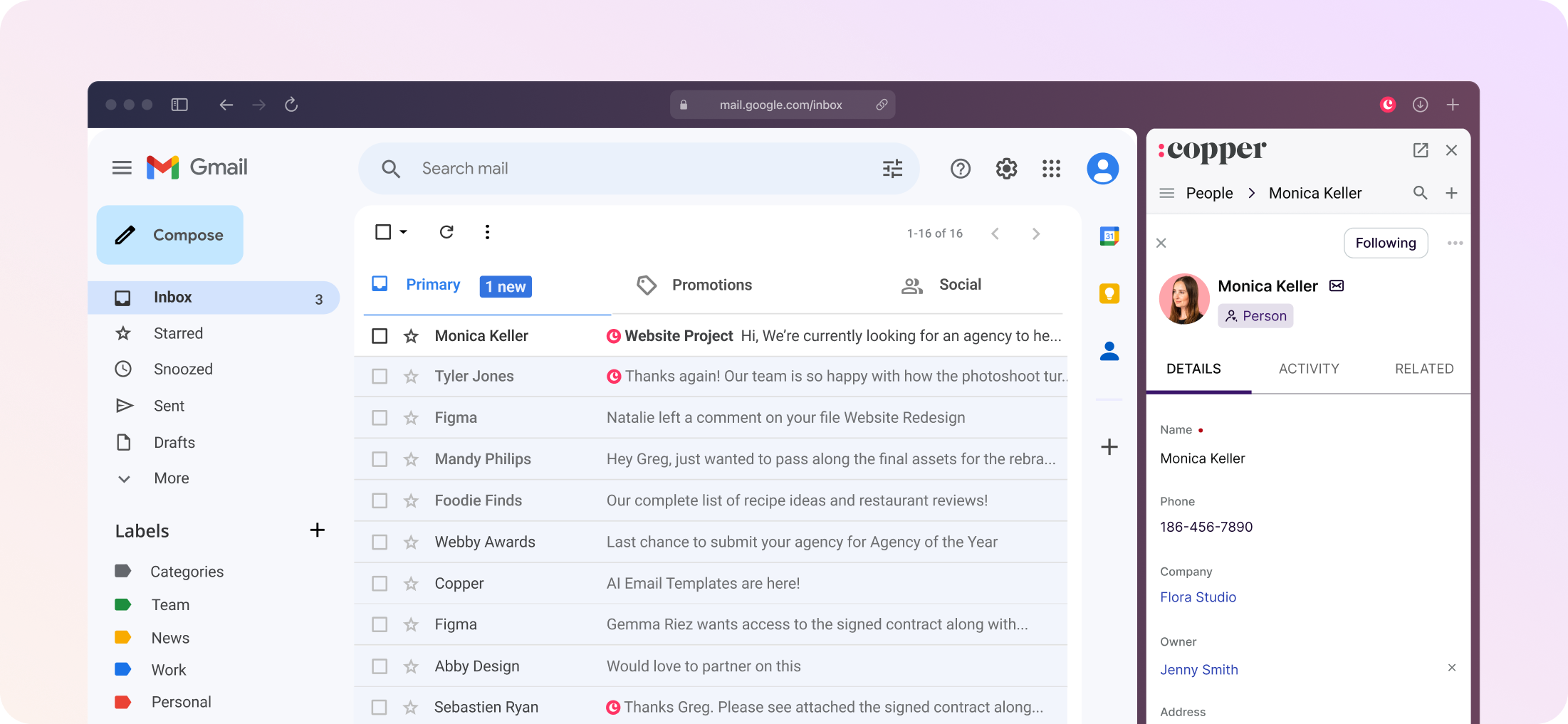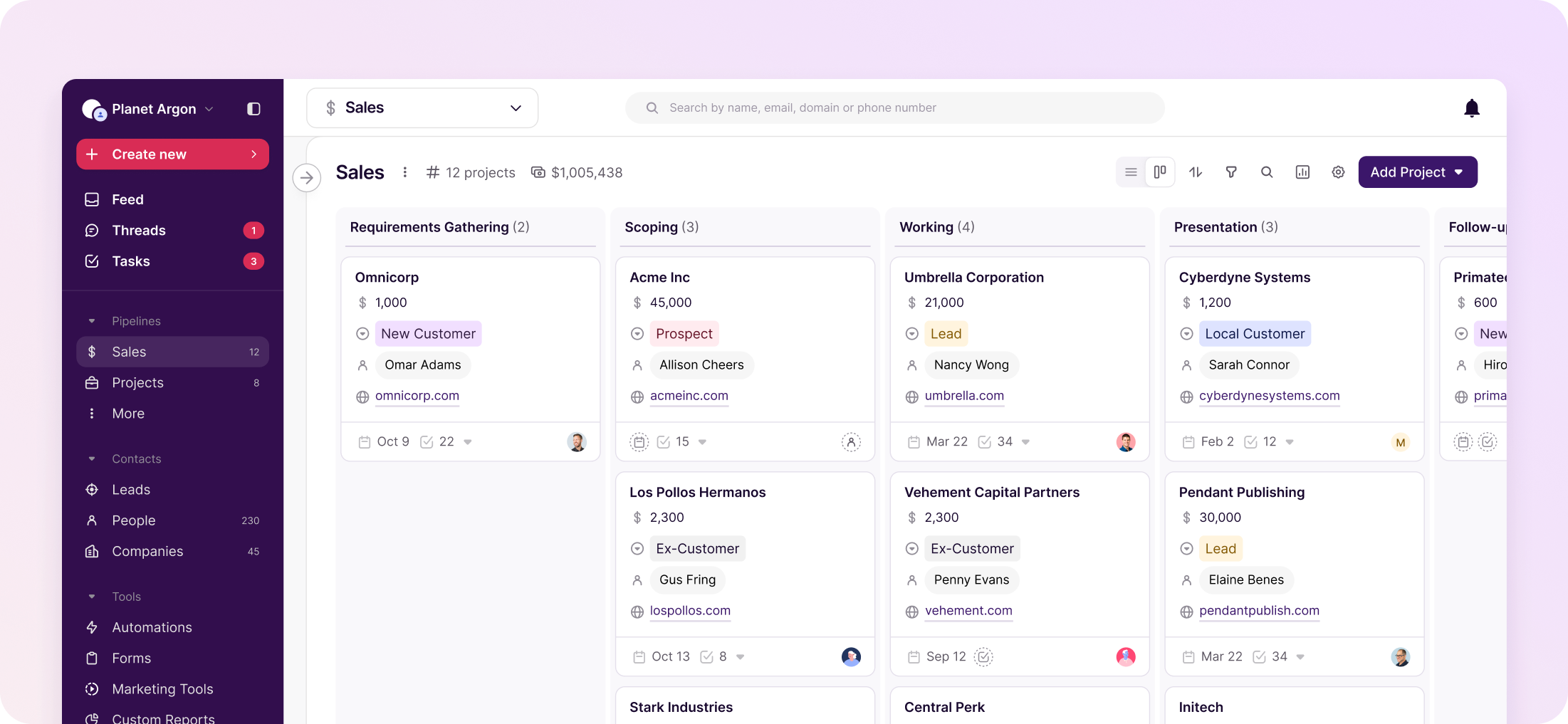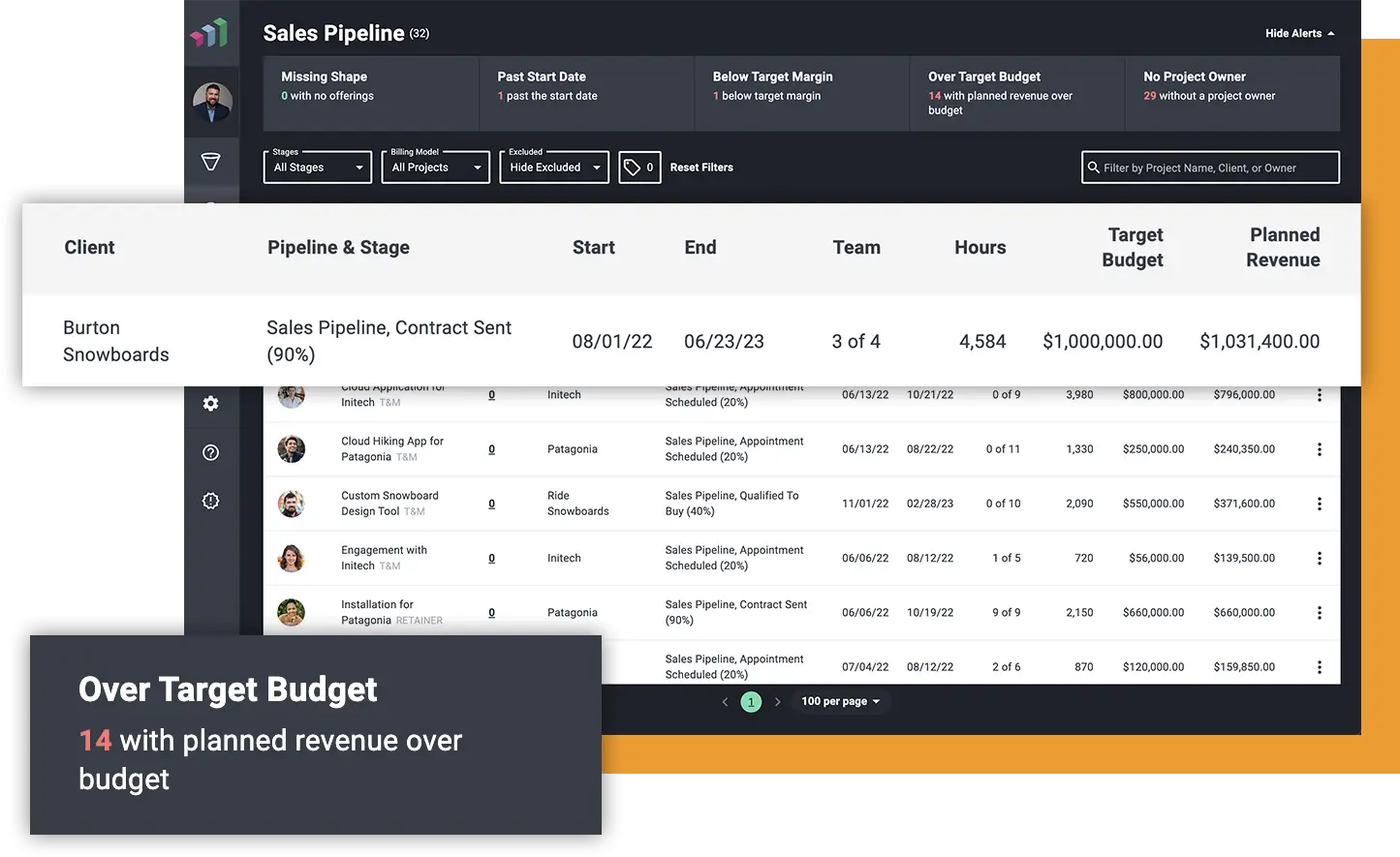Planet Argon is a software development agency that thrives on long-term client relationships. Instead of quick, one-off projects, they focus on maintaining and improving existing applications over many years.
But with multiple clients and developers juggling projects, keeping track of who’s doing what (and when) became a challenge. Not because of the work, but because of the tools.
Disconnected systems, outdated spreadsheets and mismatched CRMs were slowing them down. They needed a better way to keep everything moving without the headaches.
"I had 15 clients and 20 developers to manage, and without a better system, shifting resources around in spreadsheets was incredibly stressful,” said Michael Kurt, Software Delivery Manager at Planet Argon.
That’s where Copper and Parallax came in.
"We had been using a few different CRMs, but the built-in Gmail features with Copper were the biggest benefit we saw," said Robby Russell, CEO of Planet Argon.
"I’ll admit, we didn't have a strong CRM maintenance culture here at Planet Argon, but with Copper we don’t need to. Copper's integration with Gmail allows multiple team members to access past emails, notes and contact details."

But there was still a big problem: forecasting resource utilization. They were managing this through a Google Sheet which was constantly breaking, outdated, or giving them a headache. And they spent more time maintaining the spreadsheet than working on higher-level strategy.
If they wanted to accurately predict long-term resource needs for their retainer-based contracts, they needed something better.

Crafting a powerhouse tech stack
Instead of patching together broken systems, Planet Argon built a solid stack of tools that made their work easier. With a focus on Ruby on Rails consulting and long-term application support, they assembled a toolkit that helps streamline planning and delivery across their projects:
Copper: Manages client relationships and sales pipelines.
Parallax: Facilitates resource planning and forecasting.
Harvest: Handles time tracking and invoicing.
Kit: Sends technical newsletters and podcast updates.
Ruby on Rails: The core framework behind Planet Argon’s client projects, enabling integrations with tools like the Copper API.
Zapier: Automates workflows between tools.
With Copper keeping client relationships and sales on track and Parallax turning that data into real-time forecasting insights, Planet Argon finally had a way to stay ahead of their resource needs—without the headache of broken spreadsheets.
“Late last year, we were finally able to move off of HubSpot by connecting Copper, Parallax, and our Rails-based tooling,” said Russell. “We used Zapier, the Copper API, and a bit of custom code to glue everything together. It gave us more flexibility while also allowing us to drastically reduce our SaaS subscription costs and invest in other initiatives.”
Saying goodbye to guesswork
Now with a smarter system in place, Planet Argon finally had the clarity they needed.
“One of the biggest things Parallax and Copper did for us was help track pipelines from the start of a sale,” said Kurt.

“That means we’re not just looking at what’s happening tomorrow, but what our staffing needs will be months, even a year, down the road.”
Having Copper & Parallax work together delivered immediate benefits for Planet Argon:
No more guessing games when it comes to sales and staffing: Now, resource planning has become a real-time process, eliminating hours of spreadsheet management. They know exactly when they’ll need more hands on deck and when to scale back, making it easier to balance workloads without overloading developers.
Less admin, more impact: By automating the transfer of sales opportunities from Copper to Parallax, Planet Argon cut out hours of tedious data entry.
A real-time view of everything that matters: With Parallax’s real-time forecasting and resource management, project managers have a live snapshot of team capacity, project timelines, and upcoming demands.

Looking ahead to what’s next
Planet Argon isn’t about to pump the brakes. Now that they’ve got a solid system in place, they’re all about fine-tuning, optimizing, and making their workflows even slicker. No more scrambling to track projects or guess where resources are needed—they’ve got a setup that actually works for them.
The best part? They’re growing without the growing pains. Whether that means expanding the team, taking on bigger projects, or just working smarter, they’ve got the tools (and the confidence) to make it happen.
No more guesswork. No more headaches. Just a better way to run their agency.






